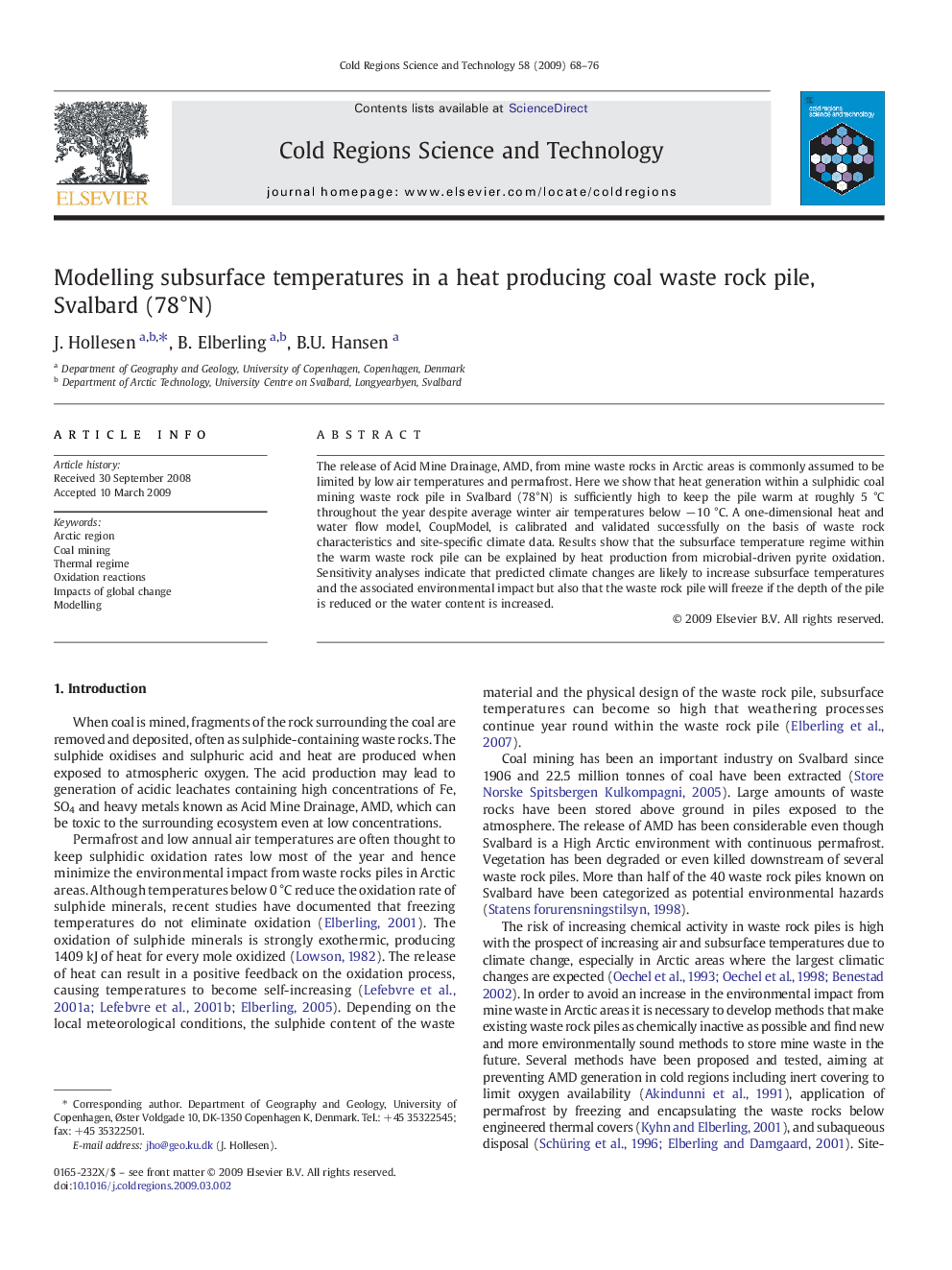| Article ID | Journal | Published Year | Pages | File Type |
|---|---|---|---|---|
| 4676426 | Cold Regions Science and Technology | 2009 | 9 Pages |
The release of Acid Mine Drainage, AMD, from mine waste rocks in Arctic areas is commonly assumed to be limited by low air temperatures and permafrost. Here we show that heat generation within a sulphidic coal mining waste rock pile in Svalbard (78°N) is sufficiently high to keep the pile warm at roughly 5 °C throughout the year despite average winter air temperatures below − 10 °C. A one-dimensional heat and water flow model, CoupModel, is calibrated and validated successfully on the basis of waste rock characteristics and site-specific climate data. Results show that the subsurface temperature regime within the warm waste rock pile can be explained by heat production from microbial-driven pyrite oxidation. Sensitivity analyses indicate that predicted climate changes are likely to increase subsurface temperatures and the associated environmental impact but also that the waste rock pile will freeze if the depth of the pile is reduced or the water content is increased.
